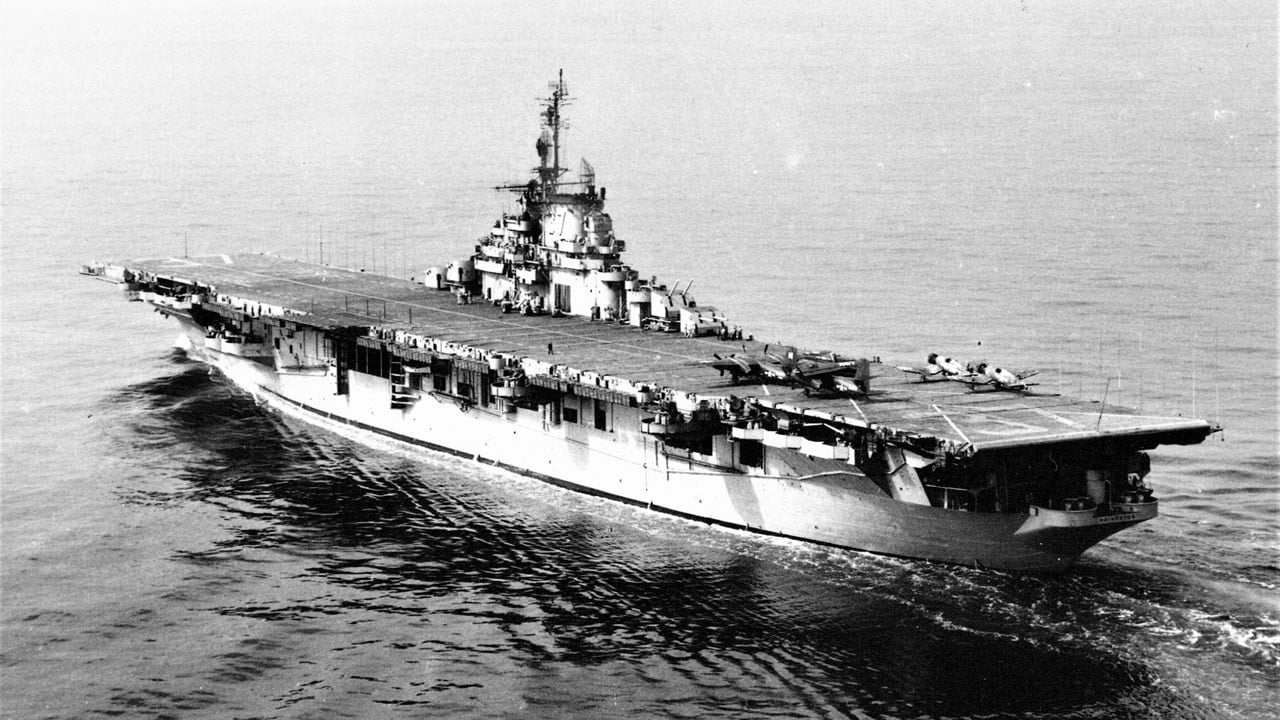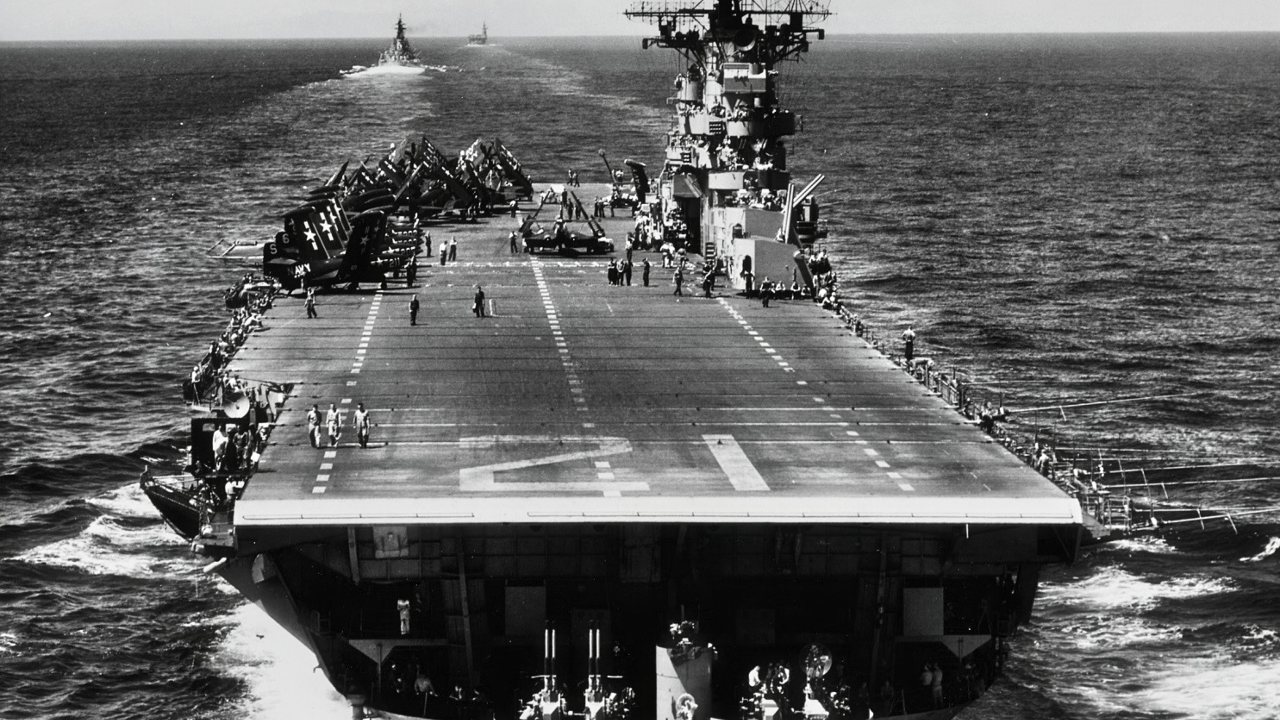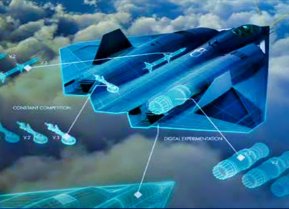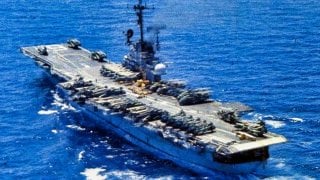USS Hancock: The Badass U.S. Navy Aircraft Carrier That Was Truly Special
The 11th ship of the Essex-class aircraft carriers was the USS Hancock. CV/CVA-19 was named to honor Founding Father John Hancock, president of the Second Continental Congress.
CV-19 USS Hancock profile: During the 20th century, the U.S. Navy’s Essex aircraft carriers represented the largest ship class across the globe.
Throughout the 1940s, two dozen Essex vessels were constructed, and many would contribute to the World War II effort and beyond.
The 11th ship of this class was the USS Hancock. CV/CVA-19 was named to honor Founding Father John Hancock, president of the Second Continental Congress.
Although USS Hancock was briefly decommissioned following the Second World War, she underwent a modernization overhaul and later rejoined the service.
A brief overview of the Essex-class aircraft carriers:
Following the repudiation of the ship limitations proposed in the pre-war Washington Naval Treaty, the Essex-class carriers were built longer and heavier than its predecessors. Equipped with a wider and longer flight deck, these vessels were able to accommodate additional aviation operations as well.
The incorporation of greater armor protection also enhanced the Essex ships, including the provision of additional anti-aircraft guns. Each ship in this class could carry three dozen fighters, diver bombers and 19 torpedo bombers.
Introducing the USS Hancock:
USS Hancock was initially laid down as Ticonderoga in early 1943 by Bethlehem Steel Co. in Quincy, Massachusetts.
She was redesignated as Hancock one year later after the John Hancock Life Insurance Company agreed to raise money for the construction of the ship. In 1944, Hancock was launched and was commissioned shortly after.
Operational History
USS Hancock was one of the 14 Essex-class carriers that participated in the Second World War.
She launched airframes during the war that struck the islands of Masbate, Panay, Cebu and Negros, impacing enemy shipping and airfields.
Once returned to Japanese waters after a brief stint near Samar, Hancock joined other Naval carriers in strikes against shipping and airfields near the Inland Sea of Japan.

Notably, in 1945 two Japanese suicide planes attacked the task force Hancock was assigned to. Sailors were able to shoot down one about 700 feet overhead while the other was taken out right before its pilot could release a bomb on the carrier.
Following the war, USS Hancock decommissioned and sailed toward San Diego to undergo a conversion that included the installation of an angled flight deck. She would become the first carrier in the Navy to be fitted with steam catapults capable of launching high-performance jets.
During a serious overhaul in San Francisco in 1961, the carrier received new electronics gear among other enhancements.

During the 1960s, USS Hancock was deployed to Vietnam. After a brief stint on patrol at Yankee Station in the Gulf of Tonkin, she later participated in short respites at Hong Jong, the Philippines and Japan. During her combat tour, USS Hancock received the Navy Unit Commendation for her excellent service. When North Vietnam invaded the south in 1972, Hancock- along with USS Coral Sea, returned to Yankee Station where she would fly tactical sorties during Operation Freedom Train.
USS Hancock was officially decommissioned in 1976 and sold for scrap by the Defense Reutilization and Marketing Service.
About the Author: Maya Carlin
Maya Carlin, National Security Writer with The National Interest, is an analyst with the Center for Security Policy and a former Anna Sobol Levy Fellow at IDC Herzliya in Israel. She has by-lines in many publications, including The National Interest, Jerusalem Post, and Times of Israel. You can follow her on Twitter: @MayaCarlin.
Image Credit for Main Image: The U.S. Navy aircraft carrier USS Hancock (CVA-19) in April 1975, carrying Sikorsky CH-53 Sea Stallion helicopters of Heavy Marine Helicopter Squadron HMH-463, and Boeing-Vertol CH-46 Sea Knights and Bell UH-1E Hueys from Marine Light Helicopter Squadron HML-367 (reinforced) en route from Subic Bay, Philippines, to Vietnam, to take part in operations "Eagle Pull" and "Frequent Wind". Most of her regular air group had been flown to Subic Bay.


